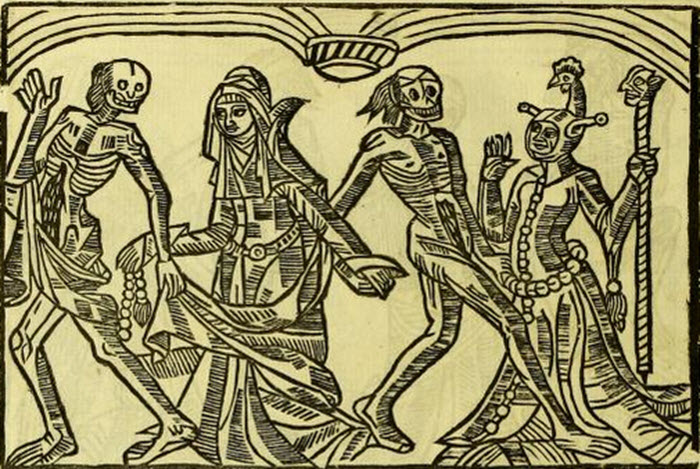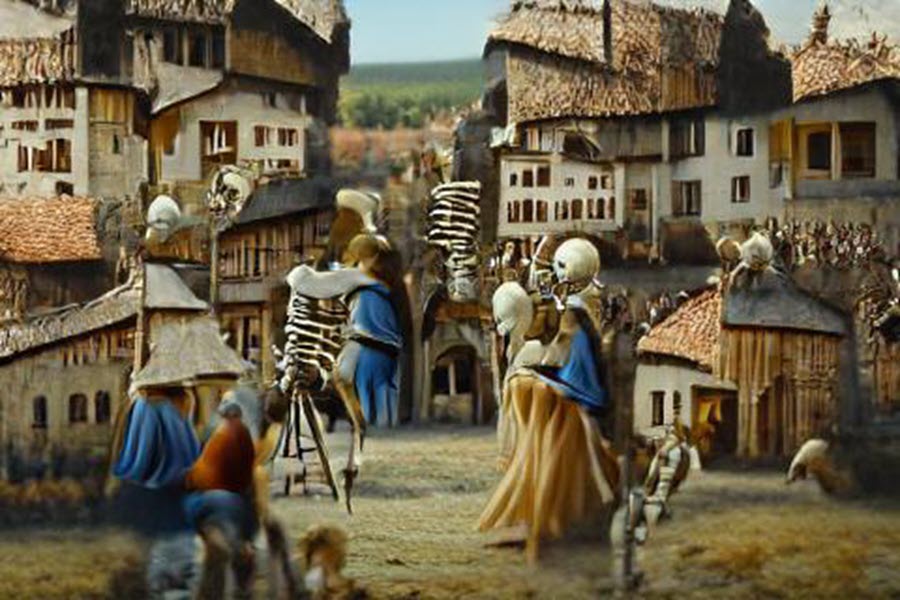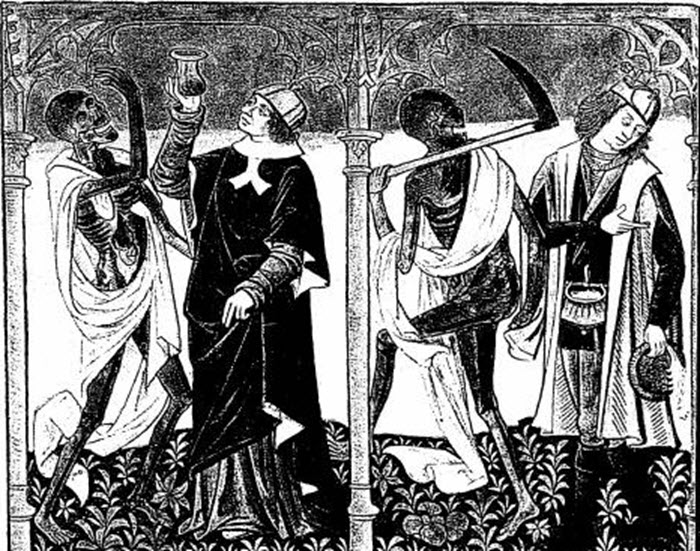

The Dance of Death is a symbolic representation of medieval and Renaissance European society, conveyed through dialogues between Death and various figures from different social classes and occupations. In the drama, Death invites its partners to dance, and they cannot refuse. From high-ranking Bishops to lowly Peasants, Death's dance partners are all equal before it. The central meaning of this allegory is that death is inevitable, regardless of one's status in life.
The drama originated in Germany during the 14th century and was likely performed by religious orders in or near churches. It was named "Chorea Machabaeorum" or "La Danse Macabre" after the festival of the seven brothers whose martyrdom is recorded in the 7th chapter of the 2nd book of Maccabees. The dramatic poem was imitated in Spain as "La Danga General de los Muertos" in 1400, but it did not spread. The French added illustrations to each strophe and painted the whole series on the church-yard wall of the Cloister of the Innocents in 1425, where the Dance of Death was habitually enacted.
The subject was treated in painting, sculpture, and tapestry in the churches of Anjou, Amiens, Angers, Rouen, and other places, with numerous woodcuts and accompanying letter-press succeeding the invention of printing. The subject was most strikingly treated in Germany, with a picture in one of the chapels of the Marienkirche in Lubeck exhibiting the simplest form of the drama. In the Dance of Death motifs, Death is often depicted as the one unbeatable opponent.
In the 15th century, the drama was laid aside, and the pictures became the main point of interest, with the verses being subsidiary. The Dance of Death was transferred from the quiet convent walls into public places, giving a new impulse to popular art. Duke George of Saxony had the front of his Dresden castle ornamented with a life-size bas-relief of the subject in 1584, and other representations were found in Strasbourg and Bern. Holbein illustrated the subject by 53 distinct sketches for engravings, which he called Imagines Mortis, departing from the idea of a dance and giving it a new and more artistic character.

In the Dance of Death Motifs, Death is Often Depicted as the One Unbeatable Opponent
The celebrated Dance of Death on the cloister walls of the Klingenthal, a convent in Basel, though painted probably not later than 1312, exhibited a departure from the simplest form: the number of persons exceeding the original 24, and the chain being broken up into separate couples. But both alike are only to be regarded as scenes from a drama, and cannot, therefore, be justly compared with a contemporary Italian painting, the Triumph of Death, by Andrea Orcagna. And the acted drama enduring till the 15th c., we find that while there were varieties in the paintings, the poem, which was the most important feature, remained unchanged.
About the middle of the 15th century; however, the drama being altogether laid aside, the pictures became the main point of interest, the verses merely subsidiary. Accordingly, we find from this time the same pictures repeated in different places, with different verses, or no verses at all, till at length both verses and pictures entirely change their original character. The Dance of Death being transferred from the quiet convent walls into public places, gave a new impulse to popular art. Duke George of Saxony had, in 1584, the front of his Dresden castle ornamented with a life-size bas-relief of the subject, and other representations are to be found at Strasburg and Bern. There was a Dance of Death painted round the cloister of old St. Paul's in London, in the reign of Henry VI.; and there is a sculptured one at Rouen, in the cemetery of St. Maclou. But Holbein has the credit of availing himself most effectively of the original design, and giving it a new and more artistic character. Departing from the idea of a dance, he illustrated the subject by 53 distinct sketches for engravings, which he called Imagines Mortis. The originals of these are at St. Petersburg, and impressions of them have been frequently repeated under different names.
We may cite as authorities on this subject, Peignot's Recherches mr les Dames des Marts (Dijon and Paris, 1826); Massman's Baseler Todtentdnze (Stuttgart, 1847); and Douce's The Dance of Death (Lond. 1833).
Adapted from an article in the American Cyclopedia. Last updated March 11, 2023